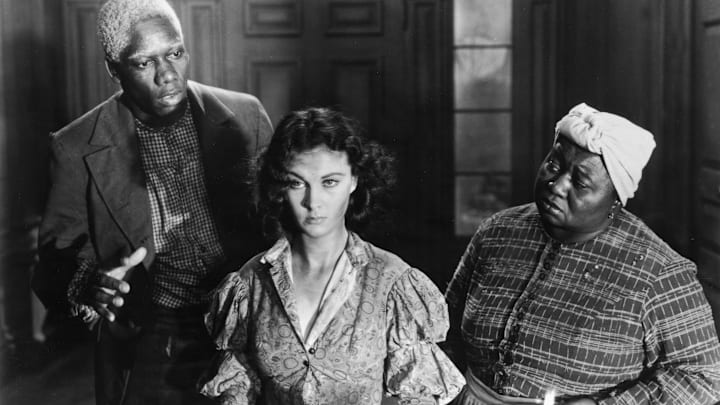It’s not an exaggeration to say that the process of bringing Margaret Mitchell’s 1936 novel to the silver screen was one of the most tortuous in Hollywood history. By the time Gone With the Wind finally premiered in December 1939, it had cycled through three directors, more than a dozen screenwriters—F. Scott Fitzgerald among them—and too many eleventh-hour script revisions to count.
Some of those revisions are probably lost to history, as producer David O. Selznick reportedly instructed cast and crew to destroy their shooting scripts. But not everybody complied. A handful of these so-called “Rainbow Scripts,” in which Selznick’s edits were added on different-colored sheets of paper, are still floating around in collections today. Casting director Fred Schuessler’s Rainbow Script recently turned up at an auction, where Yale University Ph.D. student David Vincent Kimel purchased it for $15,000.
Kimel, who has nursed a fascination with the contentious film since youth, pored over the 301-page artifact to pinpoint how it differs from the final product and chronicled his findings in the newsletter The Ankler.
Realists vs. Romantics
During the development of the movie, as The Wrap reports, screenwriters were split on how to depict slavery. Some, Kimel explained, were “‘Romantics’ who leaned into the mythos of Moonlight and Magnolias,” while “‘Realists’ … amped up scenes of mistreatment to highlight the brutality of Scarlett’s character and even condemn the institution of slavery itself.” Anyone who’s seen Gone With the Wind already knows which camp won out: The film has long been criticized for perpetuating the fallacious romanticism of the Antebellum South and all the damaging racial stereotypes that go along with it.
Schuessler’s Rainbow Script sheds more light on exactly what the Realists tried and failed to include. Per Kimel, “much of the excised material … was a harsh portrayal of the mistreatment of the enslaved workers on Scarlett’s plantation, including references to beatings, threats to throw ‘Mammy’ out of the plantation for not working hard enough, and other depictions of physical and emotional violence.” These scenes would have helped debunk the misconception that enslavers had healthy, loving relationships with the people they enslaved—a notion that has complicated the legacy of Hattie McDaniel’s historic Oscar win for her portrayal of Mammy.
Another deleted scene involves an inebriated Rhett Butler “fondling a pistol, gazing at it in a dazed, morose way” after Scarlett’s miscarriage; in another, a male looter “with a woman’s hat on his head, his arms full of billowing dresses” crosses paths with Rhett and Scarlett as Atlanta burns. The Rainbow Script also featured some montages that portrayed the Confederate Army in a positive light.
Cut for Time—Or Not?
Not all the cut content was potentially controversial. Some of it was actually meant to be funny, including a scene in which Scarlett’s fiancé, Charles Hamilton, proposes that the couple have a double wedding with Ashley Wilkes and Melanie Hamilton (Charles’s sister). Scarlett, who’s mainly marrying Charles to make Ashley jealous, quickly shoots down the idea.
The thematic variance in—and sheer volume of—Rainbow Script moments that didn’t end up in the movie makes it difficult to identify why any given scene got axed. For certain ones, the reason was probably just that the movie really needed to be shorter (even the final version is nearly 4 hours long). But with so many of those scenes involving more accurate depictions of slavery, it’s hard to ignore the possibility that Selznick was pointedly siding with the Romantics when he cut them.
“Regardless of his motive, as a result of his decision, from a modern perspective still struggling with the idealization of the antebellum world, the producer created a kind of cinematic Confederate monument whose critical reputation was increasingly called into question,” Kimel wrote.
You can read more about Kimel’s research here.
[h/t The Ankler]
